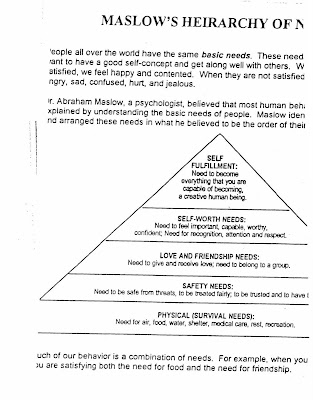
Saturday, June 13, 2009
ABC of Cognitive thinking skills
ABCD of Cognitive thinking skills
Anger work sheet ABC
Keeping a work sheet on hand when first learning to record ABC analysis of feelings is helpful. This is one I created for adolescent clients. Using three column table:
A What happened B What do I believe about what happened C consequesntial emotion
Pre school children can use ABC in an age appropriate manner.
Then you can add columns D and E. By second grade, children should be using D and E.
D = Disputing irrational belief or thought
E = Using your skills to choose a more rational emotion.
A What happened B What do I believe about what happened C consequesntial emotion
Pre school children can use ABC in an age appropriate manner.
Then you can add columns D and E. By second grade, children should be using D and E.
D = Disputing irrational belief or thought
E = Using your skills to choose a more rational emotion.
boy paper doll with emotion faces
girl paper doll with emotion faces
"How are You Feeling?" chart
Subscribe to:
Posts (Atom)












